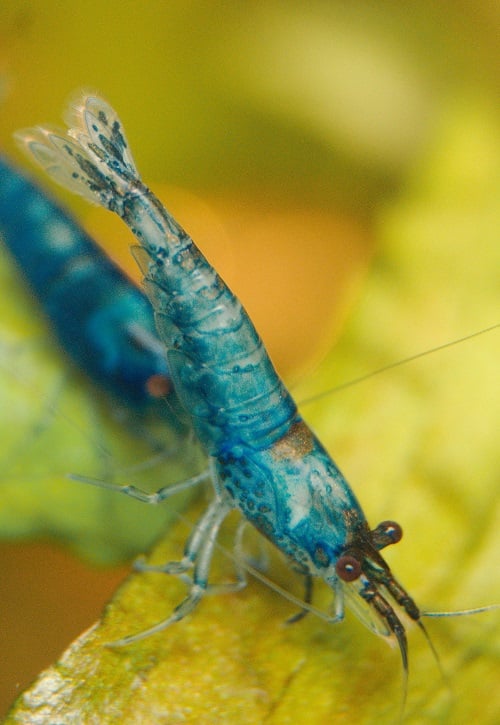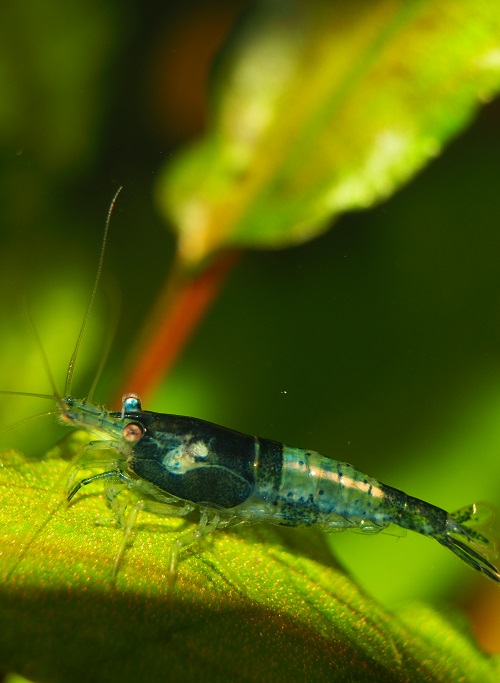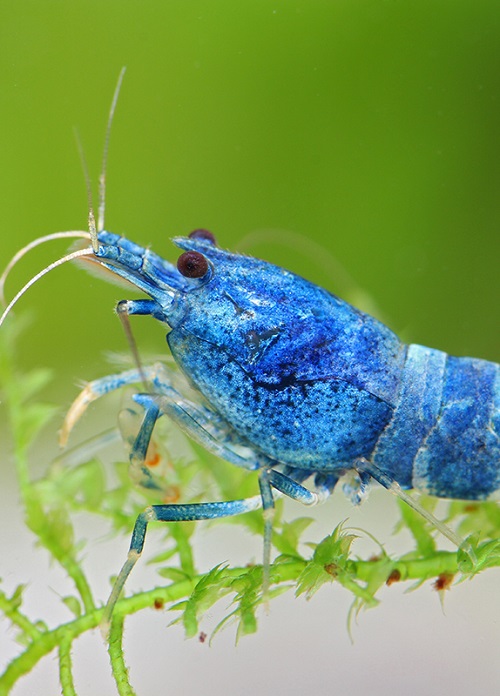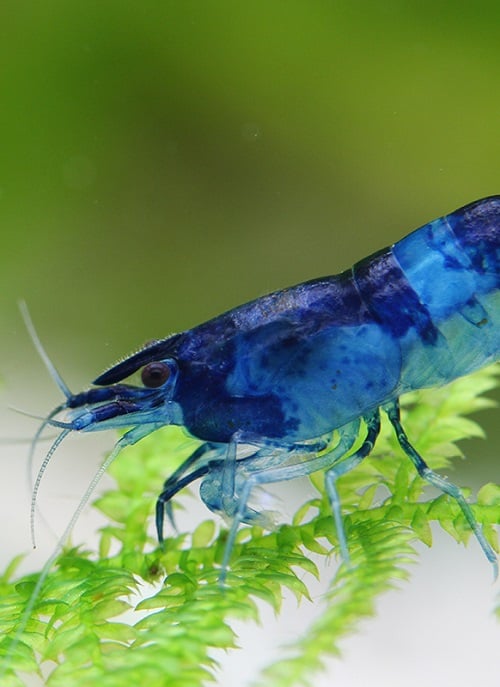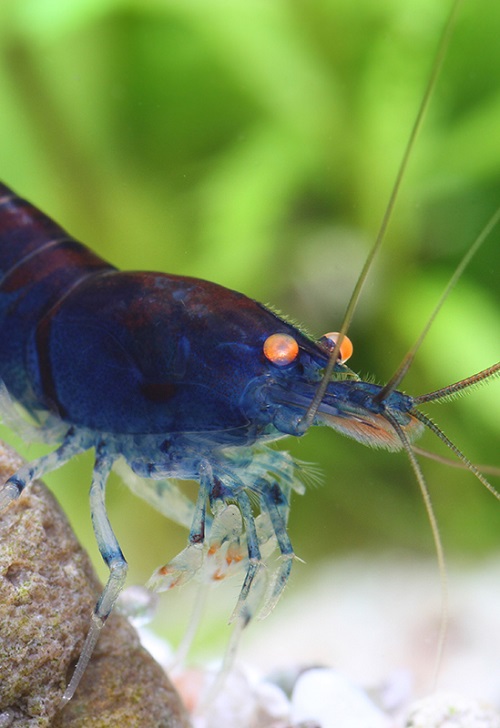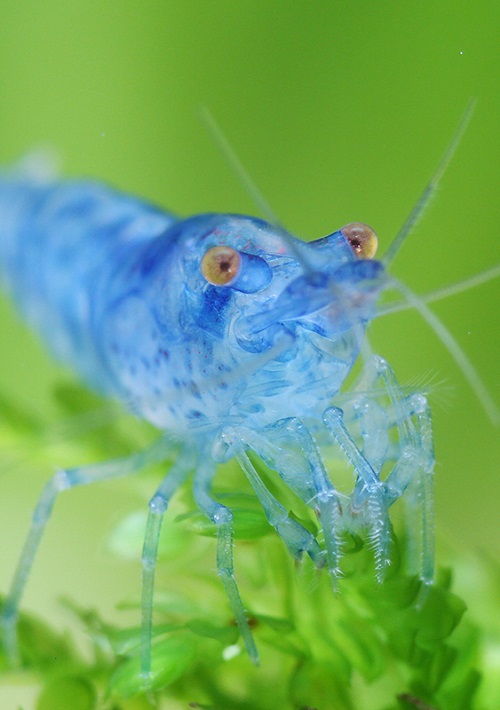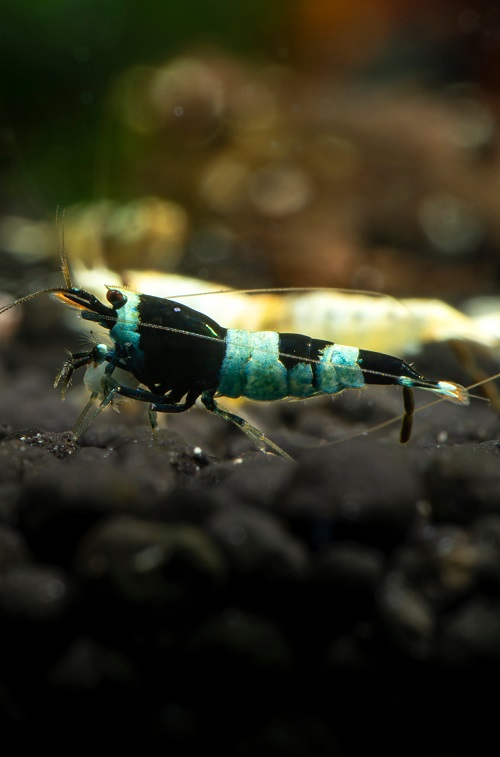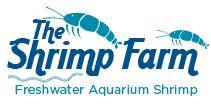9 beautiful blue aquarium shrimp
Looking to add a pop of color to your aquarium? Dwarf shrimp from the genera Caridina and Neocaridina may just be the perfect choice for you! They can be found in a range of different colors and patterns - red, white, orange, green and more - but today, let's have a look at blue aquarium shrimp.
Keep reading for a list of The Shrimp Farm's 6 favorite blue aquarium shrimp!
Table of Contents
Blue diamond shrimp (Neocaridina davidi var. ‘Blue Diamond’)
The blue diamond shrimp is one of the most well-known and appreciated blue dwarf shrimp varieties out there. Its dark sapphire color is a far cry from Neocaridina davidi's natural brownish shade of green, but it maintains its ancestor's unfussy nature. This means it's a cousin of the easy-to-keep red cherry shrimp and perfectly suitable for beginning shrimp enthusiasts.
According to most Neocaridina family trees, blue diamond shrimp were selectively bred using a brown wild-type variety. From this came the blackish-brown chocolate Neo, and subsequently the blue diamond.
You can find more information about this dark blue Neocaridina variety in the full blue diamond shrimp care guide.
Blue rili shrimp (Neocaridina davidi var. ‘Blue Rili’)
If you're looking for a patterned blue dwarf shrimp variety, why not consider the blue rili shrimp? Selectively bred from wild Neocaridina davidi shrimp, there are two types of blue rilis out there. One sports blue-on-blue coloration, with darker patches on the head and tail and a lighter, more transparent blue in the middle. This variety was bred using a blackish wild type Neo.
The other blue rili actually has red color patches, but the transparent area as well as the legs and antennae are still a pastel blue. Bred from red rilis (which in turn came from brown wild-form Neos), this is quite a looker, if you ask us! Some carbon rili shrimp may also feature this same light blue coloration between their black head and tail patches.
You can find more information about this multicolored Neocaridina variety in the full blue rili shrimp care guide.
Blue jelly shrimp (Neocaridina davidi ‘Blue Jelly’)
Yep, another Neocaridina davidi variety! (Hobbyist) breeders have managed to create all sorts of different shades and patterns of blue by selectively breeding the same wild shrimp. This one is a uniform light blue in color, perfect if you're looking for a more pastel shade than that of the aforementioned blue diamond shrimp.
Interestingly, according to most sources, the blue jelly shrimp was bred by using the red-and-blue rilis discussed above. The red patches have been shed to leave only the slightly transparent blue body color.
You can find more information about this light blue dwarf shrimp in the full blue jelly shrimp care guide.
Blue bolt shrimp (Caridina cf. cantonensis)
You didn't think we were going to forget to include a Caridina cf. cantonensis variety on this list, did you? Also known as the bee shrimp, this species has been selectively bred into possibly even more color varieties than the Neocaridina varieties we've been discussing so far. And yep, that includes blue ones! The blue bolt shrimp, with its white-to-blue color gradient, is one of our personal favorites.
These cousins of the popular crystal red shrimp are a little more difficult to keep than Neos due to their sensitivity to low water quality, but their looks make them more than worth it.
You can find more information about this white-and-blue dwarf shrimp in the full blue bolt shrimp care guide.
Blue dream shrimp (Neocaridina davidi var. 'Blue Dream')
The darkest blue aquarium shrimp from the genus Neocaridina that you'll be able to find is probably a high-grade blue dream shrimp. As discussed in the article on grading blue dream shrimp (which comes with a handy grading chart for your convenience!), these Neos can be so dark in color that they almost look black on certain substrates.
You'll find blue dream shrimp in various slightly different hues, from a pure sapphire tone to lightly purplish. The most coveted individuals are fully opaque (especially the females), but if your colony is of "lower quality", fear not. You can selectively breed them for the most intense coloration to up their game a little.
Blue tiger shrimp (Caridina mariae)
One of the most eye-catching blue aquarium shrimp you may come across in your local aquarium store is the blue tiger shrimp. Sometimes known as the orange-eyed blue tiger shrimp (OEBT), this is truly the definition of an eye-catcher. Previously classified as yet another variety of Caridina cf. cantonensis, it is now considered to be a different species: Caridina mariae.
Blue tiger shrimp can range in color intensity from 'blond' (almost transparent) to a completely opaque, midnight blue. The darker and more opaque colors fetch highly prices, but in the end, it all depends on your own preferences. There are even silver-eyed and 'rusty' blue tiger shrimp.
You can find more information about this spectacular dwarf shrimp in the full blue tiger shrimp care guide.
Blue velvet shrimp (Neocaridina davidi var. Blue Velvet)
If you liked the previously mentioned blue jelly shrimp, you'll appreciate blue velvet shrimp as well. Although their ancestors are slightly different - velvets were likely bred from carbon rilis and jellies from red rilis - both are Neocaridina davidi varieties that are similar in color.
Both blue jellies and blue velvets also share the same easy care requirements and are suitable for beginning shrimp enthusiasts. What more can we ask for?!
You can find more information about this deep blue Neocaridina variety in the full blue velvet shrimp care guide.
Blue pearl shrimp (Neocaridina zhangjiajiensis)
Another Neocaridina species makes the list! Neocaridina zhangjiajiensis is naturally transparent to brown, but the specimens you'll find in your local aquarium store are usually either white or blue. The white version is known as the white pearl or snowball shrimp, while the light blue variety is commonly called the blue pearl.
Similar in looks to the blue velvet and blue jelly Neocaridina varieties, the blue pearl shrimp is a light, slightly transparent blue in color. What sets it apart, though, is that you may also find individuals with slight reddish streaking on the tail! This is a beautiful little shrimp to look at, and luckily it's easy to keep as well.
Shadow panda shrimp (Caridina cf. cantonensis)
Why hello there! Although the shadow panda shrimp isn't entirely blue in color, we still felt it was a good dwarf shrimp variety to close off the list with. A variety of the regular black-and-white panda shrimp, which is a selectively bred variety of Caridina cf. cantonensis, this one sports blueish rather than white vertical bands on the body.
Although shadow panda shrimp aren't the easiest to find and can be pricey, it may be worth it for you if you're looking for a real eye-catcher or a more serious breeding project.
Conclusion
As you've hopefully concluded, those looking for a blue dwarf shrimp to add to their aquarium are spoiled for choice. If you'd like to take things to the next level, you can even combine multiple species! Go for one Neocaridina and one Caridina variety to prevent undesirable results from interbreeding and still be able to enjoy two different shades of blue in your tank.



 Shrimp
Shrimp Fish
Fish Crab &
Crab & Plants
Plants Foods
Foods Snails
Snails